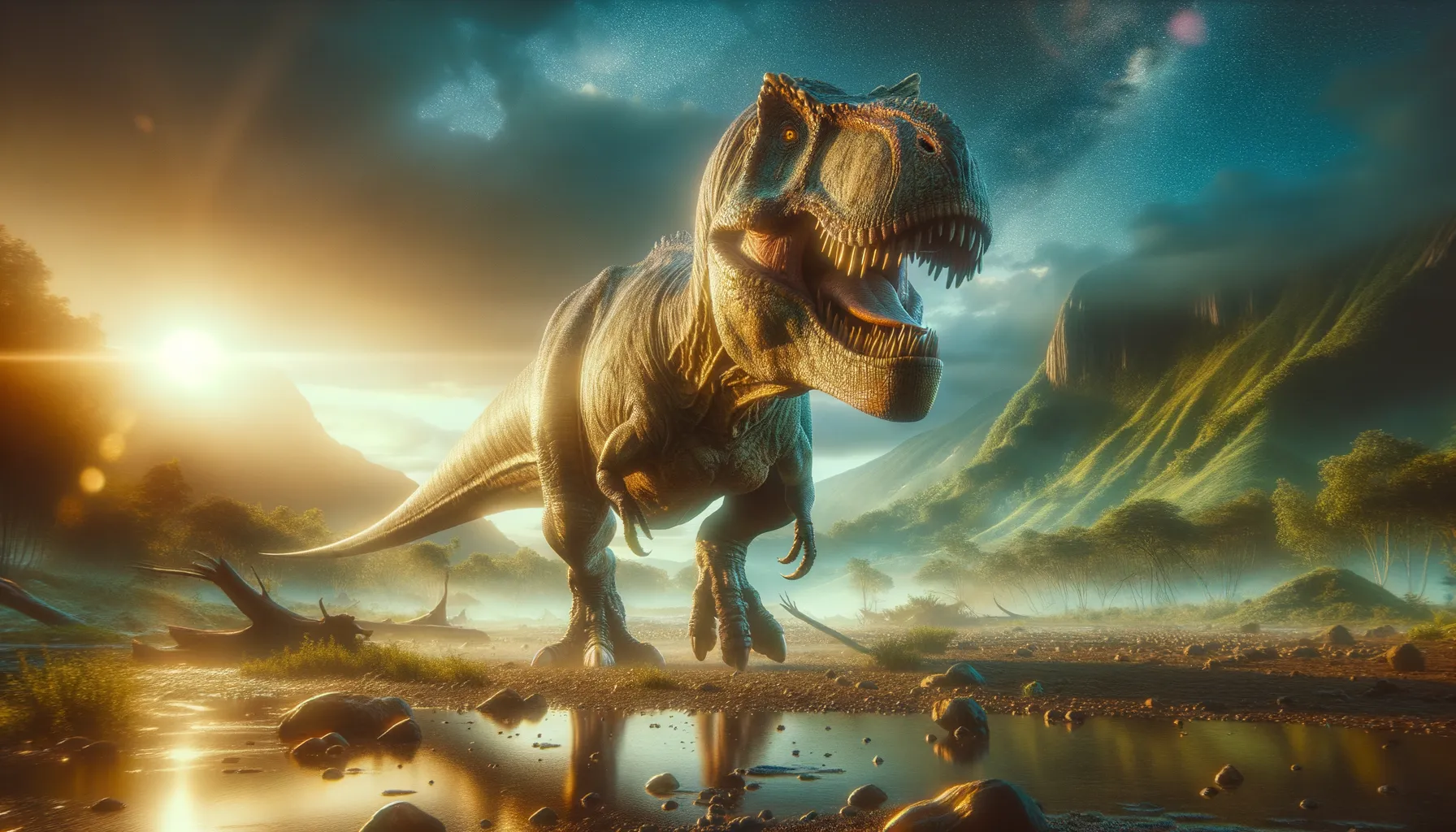
Torvosaurus
A fearsome hunter of the Jurassic era!
Period
Jurassic
Length
Measured about 30 to 35 feet in length.
Height
Stood around 8 to 10 feet tall at the hip.
Weight
Weighed approximately 1 to 2 tons.
Torvosaurus was a large, predatory dinosaur that roamed the Earth during the Late Jurassic period. Known for its impressive size, it was one of the largest carnivores of its time. Fossil evidence suggests it had robust and powerful jaws that were well-adapted for hunting large prey. Torvosaurus' remains have been primarily found in North America and Europe, indicating a wide range of habitat.
Diet
Torvosaurus was a carnivore, likely preying on large herbivorous dinosaurs. Its teeth were sharp and curved, perfect for slicing through flesh, indicating a diet primarily consisting of meat.
Hunting
Torvosaurus likely relied on stealth and power to ambush its prey, using its strong legs to launch quick attacks. Fossil evidence suggests it hunted alone, using its size and strength to overpower large herbivores.
Environmental challenges
During the Late Jurassic, the environment was dynamic with fluctuating climates, ranging from semi-arid regions to lush vegetation. Torvosaurus had to adapt to different landscapes, from open plains to dense forests. Competition for prey with other large carnivores like Allosaurus was a significant challenge, possibly affecting its territorial behavior and hunting strategies.
Speed
Moderate speed, typical for large theropods.
Lifespan
Estimated at around 20-30 years.
First discovery
First discovered in North America in 1971.
Fun Facts
- Torvosaurus was a large predator that lived during the Jurassic period, around 150 million years ago.
- This dinosaur was one of the largest carnivores of its time, growing up to 33 feet in length.
- Its name means 'savage lizard,' which hints at its fearsome nature and predatory skills.
- Torvosaurus had large, sharp teeth suited for a meat-heavy diet, likely preying on smaller dinosaurs.
- Fossils of Torvosaurus have been found in North America and Europe, showing its wide geographical range.
- The first Torvosaurus fossils were discovered in Colorado, USA, in the 1970s.
- Torvosaurus lived in what is now the United States and Portugal, indicating it could travel across vast distances.
Growth and Development
Torvosaurus likely experienced rapid growth during its early years to reach its large adult size quickly, providing an advantage in survival and hunting. Juveniles may have had different feeding habits, focusing on smaller prey to reduce competition with adults. Bone analysis suggests a varied growth rate, potentially influenced by food availability and environmental conditions.
Habitat
Torvosaurus inhabited diverse environments, such as dense forests, floodplains, and open woodlands. These areas offered substantial prey opportunities and camouflage for hunting. The presence of river systems and deltas in its habitat indicates it likely had access to fresh water. Its adaptable nature helped it thrive across regions that are now modern-day North America and Europe.
Interaction with other species
As a top predator, Torvosaurus had a complex relationship with other species, influencing and regulating populations in its ecosystem. It competed with other carnivores for food and territory, leading to possible confrontations or niche separation. Herbivorous dinosaurs likely adjusted their behavior and migration patterns in response to the presence of Torvosaurus as a threat.
Natural lifespan
Torvosaurus had a natural lifespan estimated between 20 and 30 years.
Reproduction
Torvosaurus likely laid eggs in nests constructed on the ground, similar to other theropods. Parental care is uncertain, but some theropods are believed to have protected their nests. The reproductive strategy would have involved producing multiple offspring to ensure survival despite high predation rates on eggs and juveniles.
Social behaviour
While direct evidence of Torvosaurus' social behavior is limited, it might have been a solitary hunter like many modern large predators. Occasional group behavior cannot be ruled out, especially if juveniles banded together for protection or during migrations. Its interactions would have primarily focused on territorial defense and competition for resources.
Fossil locations
Fossils of Torvosaurus have been predominantly found in the Morrison Formation of North America, indicating a significant presence there. Additionally, discoveries in Portugal suggest its range extended into Europe. These locations provide insights into the dinosaur's geographic distribution and environmental adaptations.
